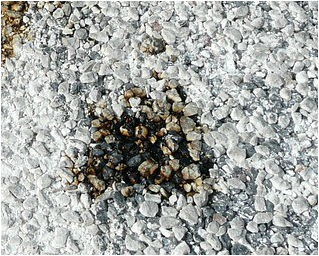Don't be a turkey as you prepare Thanksgiving dinner! Millions of turkeys will be roasted, fried, grilled, boiled, pressured cooked, or slow cooked. Cooking millions of turkeys will result in lots and lots of turkey grease, much of which will be improperly dumped down the drain. According to Business Insider, Roto Rooter, one of the largest drain repair companies in the United States, gets 20% more calls over Thanksgiving weekend due to clogged pipes. When turkey grease is dumped into the kitchen sink and down the drain, it congeals, clogging the pipe and trapping food scraps until the only solution is to call the plumber.
 When you spill something on your carpet and see discoloration, you probably panic and start trying to get it out. You probably aren’t worried about classifying the blemish on your carpet as a “spot” or a “stain.” But maybe you should, because the distinction makes a difference. Spots. A “spot” refers to a soil, oil, or other materials that attach to the carpet fiber and attract dirt and other substances. “Spots” are not chemically bonded to carpet fiber and can be removed more easily than stains. However, if not promptly removed, a spot can become a stain. Therefore, it is critical to deal with a spot as soon as possible. First, attempt to blot any liquid from the spot. After soaking up any excess liquid, use plain tap water to gently blot the remaining discoloration. If you notice the discoloration spreading or not improving, stop and call our office for instructions. After a spot is removed, it may reappear. This is called “wicking”, and it occurs when a substance soaks into the backing of the carpet and slowly works back up to the fibers in the top of the carpet. If a spot reappears, repeat the process described above for removing a spot. Stains. A “stain” refers to discoloration of the carpet fiber due to a substance embedding into or chemically bonding to the carpet fiber. Stains are often permanent and must be removed by a professional. |
Other Issues
March 2020
Categories
All
|
Quick Links |
Affton Location
|
Our Company
"Spectrum Cleaning and Restoration minimizes property loss and improves the quality of lives through an inspired, caring, reliable, and responsive team of individuals. This is evident by our respect for each other and our desire to exceed our customer's expectations."
|
Copyright © 2024 Spectrum Cleaning and Restoration. All rights reserved.
|


 RSS Feed
RSS Feed

